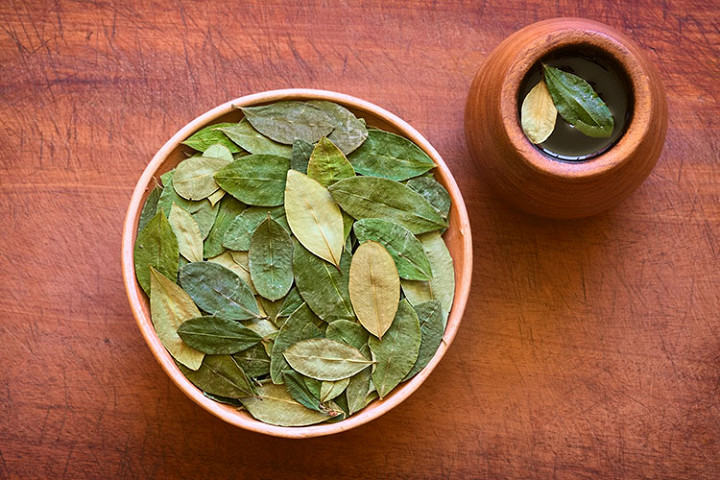RISE OF RAW COCAINE AND STATISTICS

Indeed, what Peru produced was raw cocaine, whose exports began after the war with Chile (1879-1884) and represented a relief for the depressed national economy. Raw cocaine was similar to what is now known as basic cocaine paste (PBC), with a purity of cocaine sulfate of 80% – 96%. For comparison, PBC and crack (obtained from alkaline precipitation of cocaine hydrochloride) contain cocaine sulfate from 40% to 90%, although at that time, no one had thought to smoke raw cocaine.
How was raw cocaine obtained? Peru exported coca leaf, but due to the long sea voyage to Europe (although it did not take as long as Serpost today) it did not arrive in good condition at the laboratories for the production of cocaine. It was the pharmacist Alfredo Bignon, owner of the French Apothecary in the center of Lima, who in 1885 invented an economic method to process the coca leaf in the same field of cultivation using kerosene and caustic soda, inputs easily available in century Peru. XIX. Cocaine sulfate or crude cocaine obtained by the Bignon method, arrived in good condition in Europe, where it was refined into cocaine hydrochloride. The main advantage was the reduction of costs: each kilo of raw cocaine represented between 160 and 180 kilos of coca leaf (the kilo of PBC represents about 150 kilos of coca leaf). The current method of maceration of coca leaves to convert it into PBC, is based on the old method of Bignon.
Also in 1885, the Coca Commission was created, made up of Peruvian scientists led by José Casimiro Ulloa, who promoted Bignon’s method and “strictly encouraged the Peruvian production of the drug to export raw cocaine, and not just coca, elixirs of coca and the like ”.
It should be noted that two varieties of coca leaf were cultivated in Peru: the Erythroxylum coca and the Erythroxylum novogranatense. The first, which was mainly cultivated in Huánuco and was destined for the production of cocaine, and the second, called the Trujillo variety although cultivated in Otuzco and Huamachuco, had less alkaloid and was mainly destined to make coca elixirs.
By the 1890s, Peru exported significant amounts of raw cocaine and coca leaf. Due to the protectionist policies of the United States, the North American laboratories (Merck & Co., Parke-Davis, Squibb) did not import raw cocaine, but coca leaf from which they only made cocaine. By contrast, German (Merck, Boehringer, Gehe, Riedel, Knoll) and French (Houdé, Midy) laboratories imported raw cocaine to refine it and convert it to cocaine hydrochloride. Germany’s Merck of Darmstadt became the world’s largest producer of white powder.
The coca leaf imported by the USA and France was also destined for the production of drinks, elixirs, etc. In 1903, Coca Cola withdrew cocaine from the formula of its carbonated drink, but partnered with Maywood Chemical Works (now the Stepan Company) to supply it with coca leaf extract (descocainized since 1907) for Coca Cola. It is curious that Maywood Chemical was founded by the German chemist Louis Schaeffer, who had a failed cocaine production project when he lived in Lima years ago.
By 1905, the value of coca leaf and cocaine exports totaled £ 206,426 and were the country’s eighth export product behind sugar, rubber, copper, wool, cotton, silver, and guano. Peruvian exports of coca leaf and cocaine are in the following table.


Hello I’m ready to order are you shipping ?
I would. Like to order
When I was in Peru several years ago with a group of students putting floors in churches up in the Andes, bought some Mata de Coca for my wife who has ongoing lung issues back home in the states. It was helpful, but when we ran out, could not figure out how to get more.
She was recently 10 days in the hospital with blood clots both lungs – almost died, and the Dr. recommended that she drink Mata de Coca which he said would help heal her lungs. 10 years ago, I just bought leaves and brought a big bag home which she used until they were gone Now I look for just leaves on the Web and find Coca powder and tea bags. 1. How is the powder used? Is it as effective as steeping the leaves? Same with tea bags? A lot of sites selling Yerba de Mata which I know is not the same thing, but hardly any sources for leaves. Do you carry them? As mentioned above, are the bags as good? The powder.
Thank you in advance for your help,
Sincerely Dan M. Appel
How to buy leaves?
Merhaba türkiye ye gönderim yapıyormusunuz
1